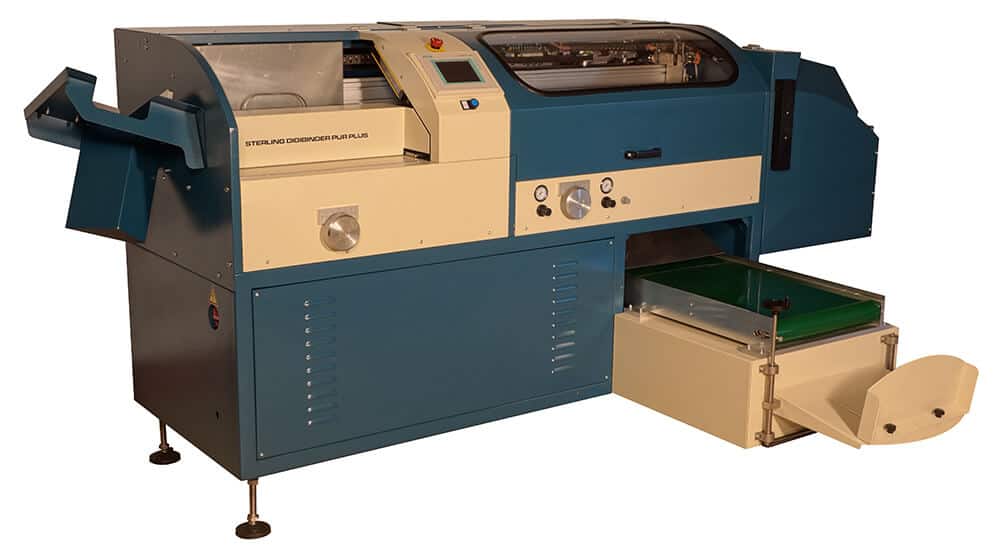Binding Pur Books
At the next Print show, Spiel Associates will be debuting two new PUR Perfect Binders: The Sterling® Digibinder PUR and PUR Plus. This adds to our line of The Digibinder®, The Digibinder Plus, and The Digibinder Super, which we will also be debuting.
For those of you who do not know the difference between PUR and traditional perfect binding, the short answer is not much. Everything is the same except for the glue: Ordinary perfect binding machines use ethylene vinyl acetate (EVA) adhesives, while PUR binders use polyurethane reactive (PUR) adhesive.
In the past, we have had remarkable success in binding any stock on our EVA Digibinders. Our customers have bound oil infused stock, stock with wax based ink, UV coated and aqueous coated stock. What we have had problems with mostly is very thick stock, such as 100 Lb. cover stock, when used as body copy. No perfect binders can bind this stock. So if you are using stock like this or very fancy photo stock, then you have no choice but to use a PUR Perfect Binder.
Yet our customers, more and more, have been requesting PUR machines. Some have said that their customers break the spine and the pages fall out—No kidding? My response is like the old joke: A man walks into a doctor’s office and says; “Doctor, it hurts when I do this.” The doctor replies; “Then don’t do that.” Where in the world can people think that they can break the binding of the book without the book falling apart?
While PUR is not indestructible, it is 50% – 70% stronger than ordinary EVA binding. It can bind stock even if the grain is in the wrong direction. It is much kinder to extreme temperatures. On the hot side, PUR has a 350°F peel failure, as compared with 165°F to 200°F for EVA glue. On the cold side, EVA can crack at 30°F PUR begins to crack at -20°F. I do suppose that considering climate change, PUR books will last much longer.
PUR uses a thinner glue application than EVA (10 to 12ml vs. 25 to 35ml per EVA). Less glue makes the binding more flexible, which allows the book to lay flat.
The downside to using PUR is that when the glue is exposed to moisture, it goes bad. PUR sucks moisture out of the air during the curing process. This takes a good 24 hours. You cannot reuse PUR glue and it goes bad after a few hours when sitting in an open glue pot. This spoilage is common and unavoidable. It is best to avoid open glue pots for this reason and for the labor intensive clean up at the shift’s end. Some manufacturers use a system that sprays a blanket of nitrogen over the glue pot area so as to keep the glue away from air. Still, cleaning up the glue pot can take up to 30 minutes. If a nitrogen system is not used, the glue can only be exposed to air for a few hours, then the pot must be cleaned, new glue put in, and melted. Also, the Teflon coating on the glue pots do not last for the life of the machine and must be recoated about every three years.
The Sterling Digibinder PUR and PUR Plus, uses a nozzle system with a closed tank. The glue is not exposed to air. The glue sprays out of the nozzle for each cycle. The machines can be run all day. There is a five minute clean up at the shifts end and at its beginning. But the glue in the tank may be continually used until it’s gone.
We have found that the nozzle system with a sealer glue tank is the most effective, economical, and user friendly system.
Books are still going strong. Let’s rejoice in the fact that despite recent technological advances, the majority of Americans are still reading books in print. According to Pew Research Center, as of 2016, 65% of Americans read a print book in the last year, which was more than double the share that read an e-book (28%) and more than four times the share that consumed content via audio book (14%).



